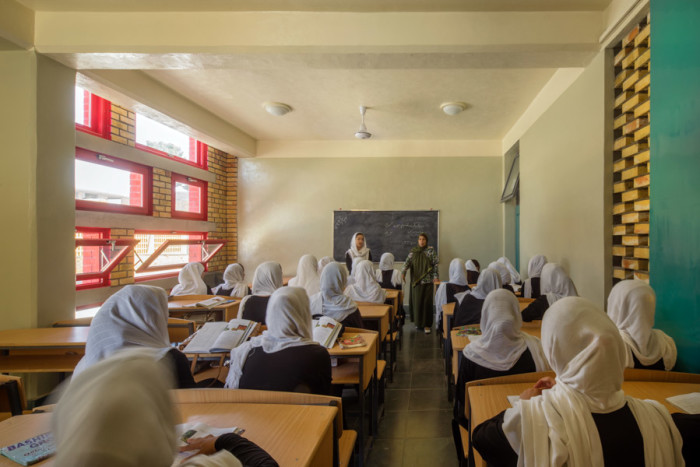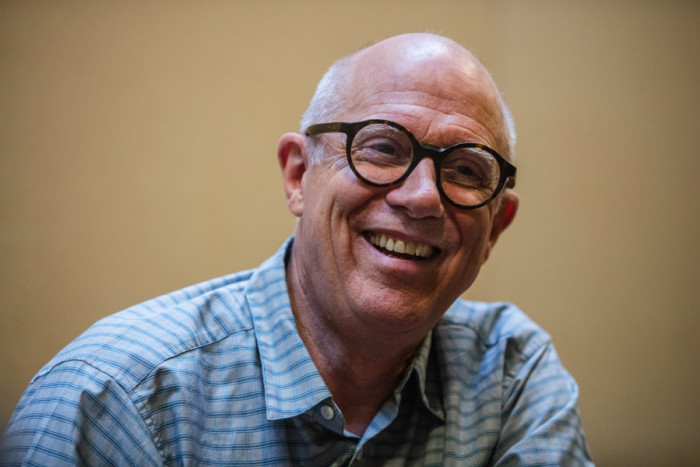
“They say never to go into business with your best friend,” laughs architect David Miller.
But despite this advice, Miller says the almost 40 years he spent working with Robert Hull was the creative partnership of a lifetime. The two met at Washington State University as architecture students. Their shared spirit of exploration led them to join the Peace Corps, Miller in Brazil and Hull in Afghanistan.
They reconnected here in Seattle and formed an architecture firm, The Miller Hull Partnership, which has created buildings including Seattle Center Fisher Pavilion and Capitol Hill’s Bullitt Center.
“We had that kind of bond and working relationship that made each of us better,” Miller says, as he recalls his friend and collaborator, who died 1½ years ago of complications from a stroke.
But the two men’s partnership lives on in one last collaboration, the Gohar Khatoon Girls’ School, which opened in Mazar-i-Sharif, Afghanistan, this summer.
The school, which now serves 3,000 girls, reflects Miller and Hull’s shared beginnings as young architects and their vision for beautiful and sustainable design, both at home and abroad.
But the Seattle-based community that helped build Gohar Khatoon goes beyond the two men. That community formed more than three years ago when philanthropist Janet Ketcham reached out to the Department of Architecture at the University of Washington, where Miller is a professor and department chair. Ketcham planned to fund a school for girls in Afghanistan and wanted UW students to help design it.
Miller immediately thought of Hull, who had spent time working as an architect while in the Peace Corps in Afghanistan in the late ’60s. Hull was brought in to teach a class, along with Assistant Professor Elizabeth Golden, for students interested in helping to design the project.
The results inspired Hull, who went on to become the pro bono architect on the project, traveling back to Afghanistan for the first time since his Peace Corps days to survey the site and meet with engineers and contractors hired to do the building.
I met with Hull after his Afghanistan trip in 2012 to write about the project. His excitement was palpable as he talked about plans to create something that blended his knowledge of Afghan architecture (he designed a building for the then-burgeoning tourism industry in Afghanistan while in the Peace Corps) and employed low-tech design to channel the elements for heating, cooling and ventilation.

“I think what both Bob and I learned from being in the Peace Corps and working in developing countries is to problem-solve and figure out what you can do with existing resources that are available nearby,” says Miller.
That sensibility can be seen in the now completed Gohar Khatoon School, which features handmade windows, breezeways that encourage natural ventilation and a private courtyard for girls to play sports.
“The building itself is just absolutely extraordinary,” says Ginna Brelsford, executive director of Sahar, a Seattle-based organization that works on education access in Afghanistan and coordinated the project (disclosure: I donated to Sahar a few years ago when it was named Ayni). “The architecture, the space, the design, it really does matter.”
Hull wouldn’t live to see the final results. When he died in April 2014, ground had only just been broken. Miller was asked to step in to help continue to work and finalize the design, alongside Golden and a graduate student from the UW.
It was a request he says was challenging because there was much to catch up on, but also easy because he’d learned about the culture and building systems of Afghanistan from Hull over the years.
Everyone on the project agrees Hull’s spirit is infused into the school, from the off-kilter alignment of the main buildings (Hull insisted it would keep the views open), to the courtyard benches (as a place for gathering) and even the bricks (he wanted them sourced locally).
“We had a couple of moments of remembering him through the architecture,” says Golden. “In the end, we still heard his voice every now and then.”
It’s a fitting memorial to a man whose legacy will live on through his buildings — both in Seattle and Afghanistan.


Great article. I served in the pc Afghanistan 1972-73 in kabul and surrounding villages. Always great to read about the country. Thanks.